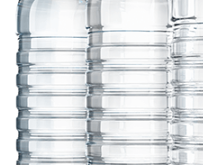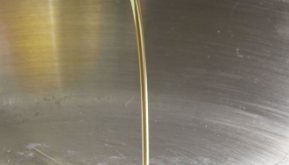Soap is supposed to clean, so it must have some type of compound that is potent.
I’ll introduce you to Triclosan.
Triclosan, a synthetic antimicrobial agent that is found in many consumer products such as soaps, toothpaste, cosmetics, and even clothing.
It benefits in preventing the spread of bacteria and is a staple ingredient in many households.
Recent research has shed light on the potential dangers associated with Triclosan, both to human health and the environment.
Understanding these risks is crucial in making informed choices about the products we use.
Luckily, it must be added to the “active ingredient” list if it is present.
Understanding Triclosan

Triclosan was initially developed as a surgical scrub in the 1960s and became popular in the 1990s as an antibacterial agent for consumer products.
Its antimicrobial properties made it popular for use in a wide range of areas.
It is commonly found in hand soaps, body washes, toothpaste, and household items.
Despite its widespread use, concerns have been raised about the safety of Triclosan.
The compound has been shown to disrupt hormone systems, leading to potential adverse effects on human health.
Additionally, its excessive use has contributed to the rise of antibiotic-resistant bacteria, posing a significant public health risk.
Health Risks Associated with Triclosan
One major concern is its potential to disrupt endocrine function.
Triclosan has been found to mimic hormones in the body, interfering with the endocrine system’s normal function.
This disruption has been associated with developmental and reproductive issues, as well as an increased risk of certain cancers.
A 2015 study about fertility problems that compares Triclosan and BPA, noted that “they both have estrogenic properties and similar chemical structures and pharmacokinetic features and have been detected in human fluids and tissues.”
A paper published by the Nature Publishing Group, and the title is: “Triclosan causes spontaneous abortion accompanied by decline of estrogen sulfotransferase activity in humans and mice”.
Triclosan’s role in promoting antibiotic resistance is a growing concern.
By killing both harmful and beneficial bacteria, Triclosan creates an environment conducive to the development of antibiotic-resistant strains, or “superbugs.”
These resistant bacteria pose a serious threat to public health, as they are more difficult to treat and can lead to life-threatening infections.
Here are some negative health effects associated with Triclosan:

- Endocrine disruption: Triclosan has been shown to disrupt hormone function in animals, leading to hormonal imbalances in humans.
- Antibiotic resistance: Prolonged exposure to Triclosan contributes to the development of antibiotic-resistant bacteria, making it harder to treat bacterial infections.
- Allergic reactions: Some individuals experience allergic reactions or skin irritation when exposed to Triclosan in personal care products.
- Environmental impact: Triclosan is harmful to aquatic ecosystems and has been found to bioaccumulate in the environment, posing a threat to aquatic organisms.
- Potential carcinogenicity: Some studies have suggested a possible association with certain types of cancer.
Environmental Impact of Triclosan
The compound is known to accumulate in waterways and ecosystems, where it can stay for long periods of time.
Triclosan can disrupt aquatic ecosystems and harm fish and other aquatic organisms.
Studies have shown that Triclosan can interfere with the hormone systems of aquatic organisms, leading to developmental abnormalities and reproductive issues.
Its presence in waterways has also been linked to the development of antibiotic-resistant bacteria in the environment, further exacerbating the problem of antibiotic resistance.
Regulatory Responses and Consumer Awareness
Regulatory agencies around the world have taken steps to address the risks associated with Triclosan.
The FDA banned the use of Triclosan in over-the-counter consumer antiseptic products, citing concerns about its safety and effectiveness.
Many companies have also voluntarily phased out the use of Triclosan in their products, opting for safer alternatives.
Still, Triclosan is still present in many consumer items, highlighting the importance of reading the labels.
Alternatives to Triclosan
Fortunately, there are safer alternatives to Triclosan available.
Natural antimicrobial agents such as tea tree oil, grapefruit seed extract, and alcohol-based sanitizers offer effective alternatives without the associated risks.
You can also look for products labeled as “Triclosan-free” to avoid exposure to this harmful compound.
Once thought of as a miracle ingredient in antibacterial products, it has come under scrutiny for its potential risks to human health and the environment.
From disrupting hormone systems to contributing to antibiotic resistance, the dangers associated with Triclosan are significant.
Some products historically known to contain higher levels of Triclosan include:
1 – Antibacterial soaps and hand washes: Triclosan was a common active ingredient in antibacterial soaps and hand washes marketed for their ability to kill germs. However, the FDA banned the use of Triclosan and other active ingredients in consumer antiseptic wash products in 2016 due to concerns about its safety and efficacy.
2 – Toothpaste: Triclosan was sometimes added to toothpaste formulations for its antibacterial properties. It was marketed to reduce plaque and gingivitis.
3 – Personal care products: Triclosan was also found in various personal care products such as body washes, deodorants, and cosmetics. These products often touted antimicrobial properties as a selling point.
4 – Household cleaning products: Triclosan was sometimes included in household cleaning products such as disinfectants, hand sanitizers, and laundry detergents. These products aimed to provide added protection against bacteria and other microbes.
5 – Medical and healthcare products: Triclosan was commonly used in medical and healthcare settings, including in surgical scrubs, wound care products, and medical equipment coatings.
 Growing Younger Everyday What Works For Me
Growing Younger Everyday What Works For Me





